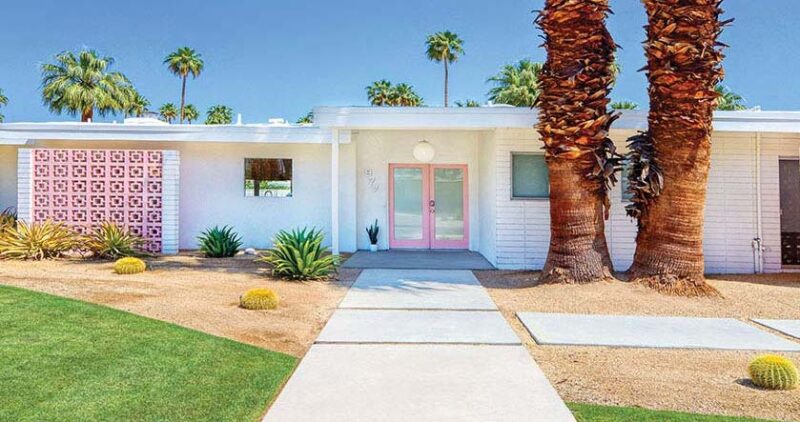Breeze blocks are the patterned, decorative concrete blocks you may have seen covering the sides of a building or stacked upon each other to form a wall. But these fascinating blocks are more than just decorative—they’re an important component of Mid Century Modern design. The blocks provide shade, circulation, protection and privacy to buildings all over the world, and they’ve got the rich history and style to prove it.

A Brief History
Breeze blocks—sometimes called screen blocks—were inspired by sun-reducing screens in Asia and first widely used in America in the 1930s. Ahead of his time as usual, Frank Lloyd Wright used “textile blocks” in the 1920s, including the Mayan Revival 1922 Storer House in Hollywood Hills and the Arizona Biltmore Resort.
Breeze blocks continued to grow in popularity in the following decades, especially when used in houses and apartments. The decorative concrete blocks were widely used in Mid Century Modern design up until the 1970s, when they began to fall out of style.
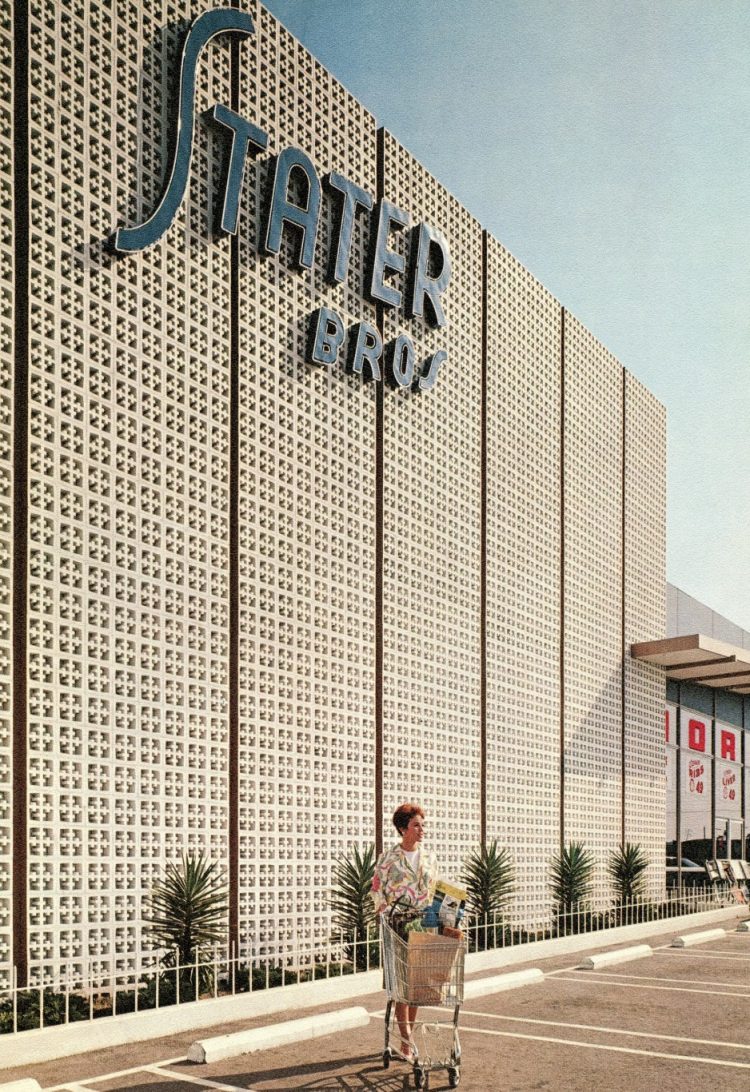
These blocks provided a visually pleasing way to filter out harsh sunlight while still providing ventilation. They also provided shade for the massive Mid Century floor-to-ceiling windows that were popular at the time.

They were especially popular in the warmer parts of the country, like California and Florida. California used concrete screen blocks to protect against the hot desert sun, while Florida architecture used them to minimize the damage of dangerous storm winds.

In fact, breeze blocks became so popular that most large cities and towns had their own factories. Because of their weight and the cost involved with shipping them long distances, it was often cheaper to manufacture them locally. Local factories produced standard patterns, like the common sunflower one, while making unique patterns that were specific to the factory too. It’s estimated that there are over 200 different patterns today.
Quintessential Breeze Block Examples
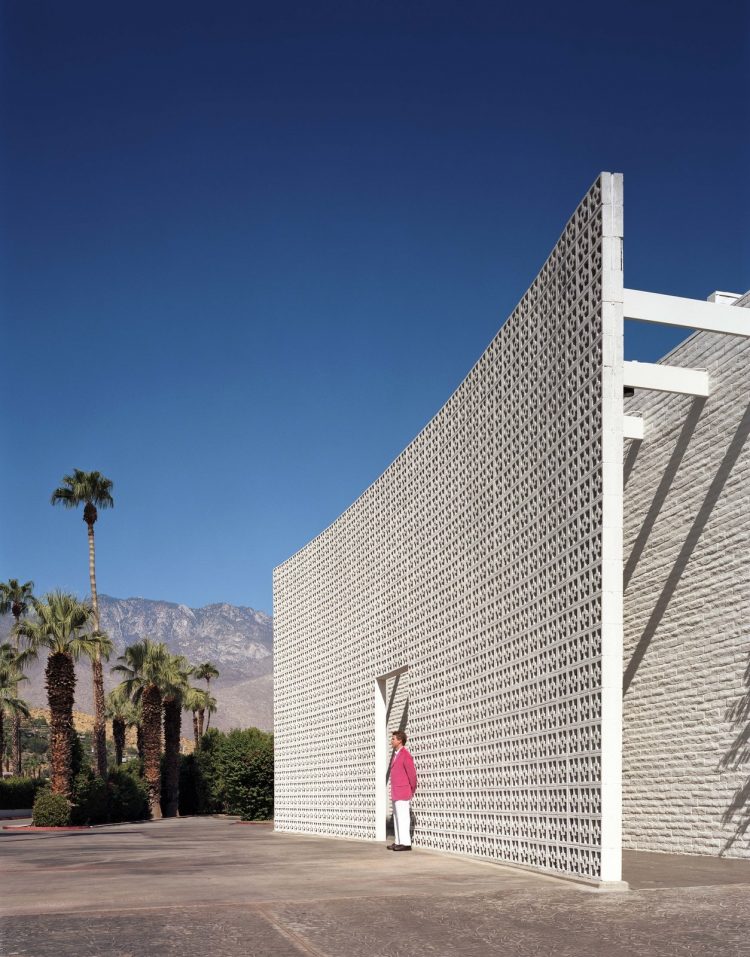
In Palm Springs, CA, the exterior of the Parker Palm Springs is surrounded by white breeze blocks that shield the 5-star hotel from the blazing desert sun and provide a private oasis for vacationers and celebrities alike.
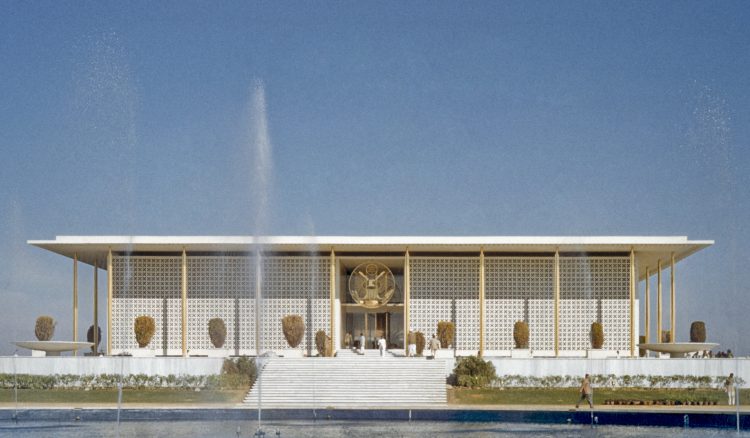
Across the ocean, the American embassy in New Delhi also features a prominent use of breeze blocks. The embassy’s architect, Edward Durell Stone, dubbed the breeze block “Empress.” Built in 1959, the embassy was designed to be a fusion of American and South Asian architecture. The American influences can be seen in the streamlined Mid Century Modern look of the embassy, while the ‘temple’ look of the structure was inspired by similar South Asian holy places. Edward Durell Stone actually patented the “Empress Breeze Block” design, which he also used in many other of his projects—including his East 64th Street New York City townhouse—but by the time it was granted, the blocks had come into popular use, and he let it be.
How the Blocks Are Used Today
Today, the decorative concrete blocks are making a comeback. Thanks to the resurgence of Mid Century Modern style, breeze blocks have crept back into today’s designs.
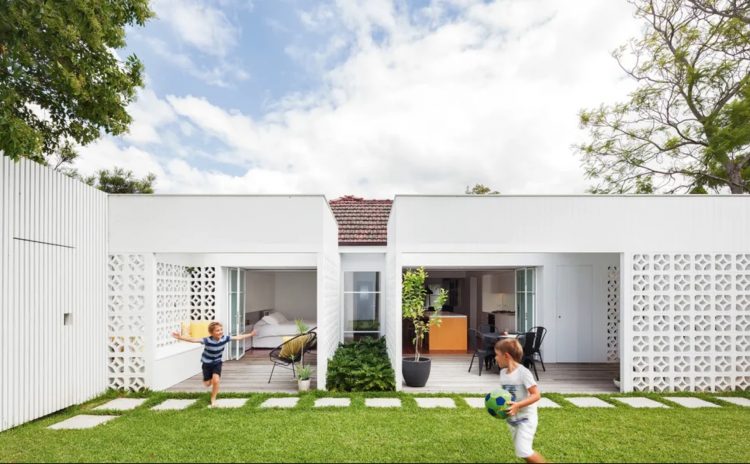
A great example of this is the Breeze Block house in Sydney. Designed by Architect Prineas in 2015, this award-winning house uses breeze blocks to create livable indoor-outdoor spaces. Another award-winning example is the Naranga Avenue house (also in Australia), which dramatically uses the concrete blocks on the exterior facade to let the light in while providing relief from the sun.
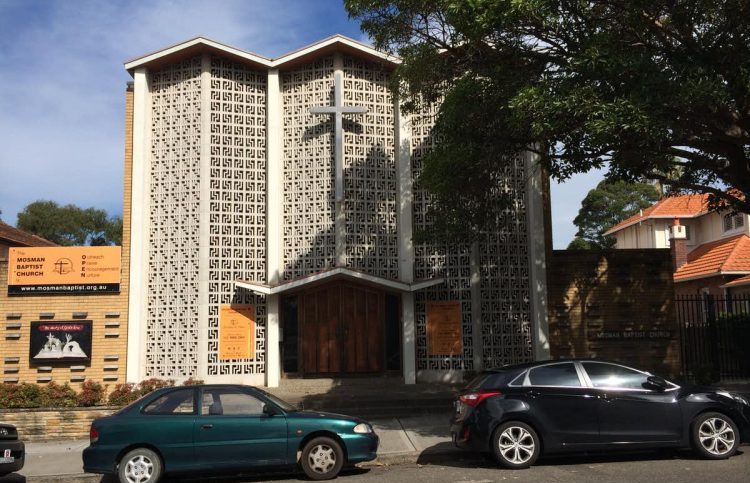

But these blocks aren’t just used in homes—today, you can find them adorning the sides of hotels, covering parking decks, or running up and down church spires.
Breezy Interiors
In fact, breeze blocks have started to move from an exterior feature to an interior accent. Today, you can find them in kitchens or against walls as fun retro decor. They’re great for providing partitions where space can clearly be divided without the unnecessary structural presence of a wall.

Breeze blocks’ usefulness and beauty means that they’re Mid Century Modern design’s new favorite throwback. If you’re looking for your own, you can order some from Our Block Co. and Tesselle. For concrete screen block inspired art and gifts, head over to Minty’s Design.
Check out Erich Meager’s breeze block inspired art, Breeze Block Inspired Artwork For Your Home, and Interior Breeze Blocks.
Special thanks to Karin Jeske at Tesselle for consulting us on the concrete blocks’ history. To learn more about the history of breeze blocks, see Concrete Screen Block by Ron and Barbara Marshall.
Of course, don’t forget to follow us on Instagram, Facebook, Pinterest and YouTube for more Atomic Ranch articles, house tours, and ideas!

